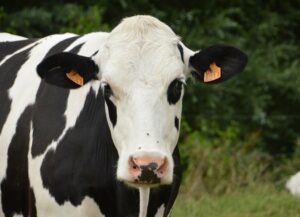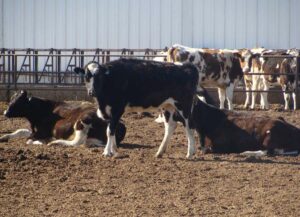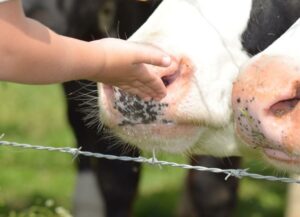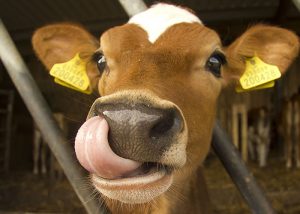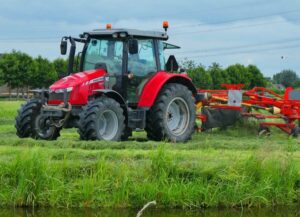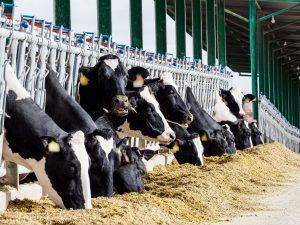Alvaro Garcia
Enzootic bovine leukosis is caused by a retrovirus known as the bovine leukemia virus (BLV). There have been attempts in Europe to eradicate the disease by culling with Denmark and the United Kingdom having been successful.
According to the USDA, and due to its endemic nature, testing and culling seropositive animals may not be such a cost-effective control method compared with preventing its transmission. In the US this disease continues to be prevalent with more than 80% of dairy operations testing positive.
In South America it is also prevalent with around 10% of newborn calves infected, particularly during the first 24 months of life, and reaching almost 50% before first calving. Losses are also the result of up to 5% cow deaths related to a BLV-associated lymphosarcoma, with reported profit losses of more than $5,000 per animal.
Some experiments have demonstrated the presence of BLV in colostrum that helps prevent neonatal infection, others however, have also detected the virus and confirmed its infectivity by oral consumption. This has led to controversy as of the importance of colostrum as a source of protection against the disease.
Aside from its importance on passive immunity, colostrum is also a potential source of exposure to BLV as well as other common pathogens. Physical treatment of colostrum has been tested as means to successfully inactivate these pathogens, with freezing and pasteurization the most common ones. These practices, however, are not devoid of some negative effects on immunoglobulin concentrations.
A very recent study (Lomónaco et al. 2020) evaluated the effectiveness of spray-drying colostrum to inactivate BLV while still providing good passive immunity. Dairy cow colostrum was experimentally contaminated with the FLK-BLV cell line which persistently infects with BLV and constantly secretes viral particles to the supernatant without cytopathogenic effect; both the FLK-BLV supernatant and the FLK viable cells were used to contaminate the colostrum.
The FLK cells were cultured in RPMI 1640 medium with the addition of sodium pyruvate (1%) and HEPES (2.5%) and supplemented with 10% irradiated fetal bovine serum. Cultures were maintained at 37°C with 5% CO2 until the formation of a confluent monolayer, then the medium was replaced with maintenance medium and cultured for 48 h. The supernatant containing cell-free BLV was harvested, clarified by centrifugation, and stored at −65 ± 10°C until use.
Three spray-drying processes were made
Two spray-drying processes used 10 L of colostrum as the starting material. This colostrum came from uninfected cows from a BLV-free herd. Subsequently these two 10-L fractions (pools 1 and 2) were contaminated with 109 BLV-infected cells from the FLK-BLV cell line or with 600 mL of fresh supernatant of FLK-BLV cells containing cell-free BLV virus.
A third 10-L fraction of colostrum, made with individual colostrum from BLV-infected cows containing antibodies against BLV, bovine viral diarrhea (BVD) and bovine rotavirus (BRV), was subjected to spray-drying (pool 3) to confirm the efficacy of the process to preserve immunoglobulins.
Residual infectivity was tested in susceptible lambs inoculated with colostrum spiked with BLV-infected cells or cell-free BLV. Lams showed evidence of infection 60 days post-inoculation, while none of those inoculated with spray-dried colostrum showed evidence of infection 60 days post-inoculation.
Experimental spray-drying inactivated infectious virus in colostrum
Results provided evidence that experimental spray-drying inactivated infectious BLV in colostrum. The authors suggested that the risk for BLV transmission can be reduced treating milk and colostrum by spray-drying prior to administration.
It was further suggested the need to investigate the effect of spray-drying on the functional properties and stability of the antibodies in colostrum under long-term storage.
Reference
Marina Lomónaco, Mariana Sowul, Gerónimo Gutiérrez, Dario Malacari, Irene Álvarez, Natalia Gabriela Porta, Osvaldo Zabal, Karina Trono. Efficacy of the spray-drying treatment to inactivate the bovine leukemia virus in bovine colostrum, J Dairy Sci. 2020 Jul;103(7):6504-6510.
© 2020 Dairy Knowledge Center. All Rights Reserved.



